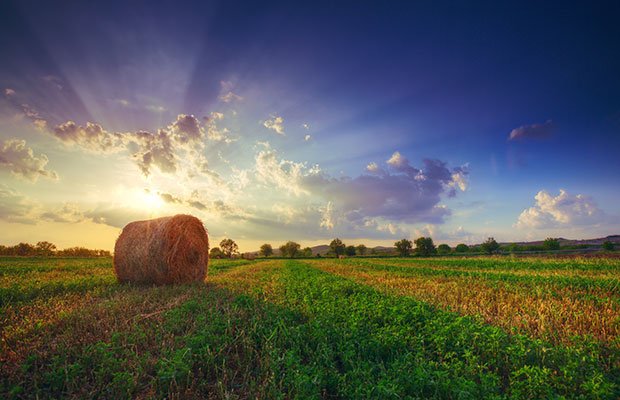Back to: AGRICULTURAL SCIENCE SS2
WEEK ONE
Welcome to SS2 Second Term!
We are eager to have you join us in class!!
In today’s class, We will be discussing Pasture and Forage Crops. We hope you enjoy the class!

TOPIC: PASTURE AND FORAGE CROPS
CONTENT
- Meaning, uses and types
- Factors affecting the distribution
- Management, practices of pastures
MEANING OF PASTURES AND FORAGE CROPS
Pasture: This is a piece of land on which forage crops grow.
Forage Crops: These are plants cultivated (or growing naturally) whose vegetative parts (leaves and stem) are fed on by livestock.
USES OF FORAGE CROPS
- They are used as livestock feeds
- They are used as cover crops which conserve soil moisture.
- They help in discouraging weed growth
- Some are leguminous in nature which enriches soil nutrient.
- For prevention of erosion
- Used as green manure
- Used for roofing farmsteads
- As bedding materials
TYPES OF PASTURES
- Natural pasture: also called natural grassland or rangeland is a piece of land on which grasses and legumes grow naturally on their own and are fed upon by farm animals
CHARACTERISTICS OR FEATURES OF NATURAL PASTURE
- It contains poor quality grasses and legumes.
- It contains soil types that are low in fertility or nutrients.
- It contains wide varieties of grasses and legumes, some of which may not be eaten by livestock.
- It has a good regenerative ability.
- Crops here can withstand trampling.

SELF EVALUATION
- What are pastures and forage crops?
- List five uses of forage crops.
- Artificial pastures: this is also referred to as established or sown pasture is a piece of land that is where grasses and legumes are cultivated and managed by man to be fed by livestock.
CHARACTERISTICS FEATURES OF ARTIFICIAL PASTURES
- It contains high-quality grass and legumes
- It contains no weed.
- Selected grasses and legumes are grown in adequate proportion
- Has a high regenerative ability
- Can withstand trampling by farm animals.
QUALITY OF A GOOD PASTURE PLANT
- Ability to regenerate fast after being browsed
- Ability to withstand trampling
- It must be highly palatable
- It must possess a high value of nutrients
- Ability to withstand extreme climatic conditions
- It should have moderate moisture content or succulent
- It must have a high leaf to stem ratio
SELF EVALUATION
- List five characteristics of natural pasture.
- List five characteristics of artificial pasture.
COMMON GRASSES AND LEGUMES OF LIVESTOCK
GRASSES
COMMON NAME BOTANICAL NAME
- Elephant grass Pennisetum purpureum
- Guinea grass Panicum maximum
- Giant star grass Cynodon plectostachyum
- Carpet grass Axonopus compressus
- Speargrass Imperata cylindrical
- Bahama grass Cynodon dactylon
- Northern gamba Andropogon gayanus
- Southern gamba Andropogon tectorum
LEGUMES
COMMON NAME BOTANICAL NAME
- Centro Centrosema pubescens
- Stylo Stylosanthes gracilis
- Kudzu or puero Pueraria phaseoloides
- Calapo Calapogonium mucunoides
- Mucuna Muccuna utilis
- Sun hemp Crotalaria juncea

FACTORS AFFECTING THE DISTRIBUTION OF PASTURE
- Climatic factors
- Soil or edaphic factors
- Biotic factors
CLIMATIC FACTORS
The type of climate in an area influences the type of vegetation in the particular area e.g. Sudan type of climate will favour the growth of grass and legume while equatorial climate does not. The elements of climate which affect the distribution of pastures are rainfall, wind, temperature, relative humidity etc.
EDAPHIC FACTORS
This refers to the level of fertility of the soil. Fertile soil enhances pasture growth and vice versa. Edaphic factors include soil PH, soil texture, soil structure, soil topography etc.
BIOTIC FACTORS
Biotic factors like diseases, pests, parasites, predators generally influence the distribution of pasture. Also human and animal activities such as bush burning and overgrazing will affect the distribution of pastures.
SELF EVALUATION
- List four grasses and their botanical name
- List four legumes with their botanical name
We have come to the end of this class. We do hope you enjoyed the class?
Should you have any further question, feel free to ask in the comment section below and trust us to respond as soon as possible.
In our next class, we will be talking about the Pasture and Forage Crops II. We are very much eager to meet you there.

What an interesting class
nice class
what are the factors affecting the establishment of pasture
Fantastic lesson
Classnotes.com my best companion as a teacher. Kudos 👌👌👌. You guys are doing a great job 👍🏽👍🏽👍🏽!
What an Interesting subject and topic
I give you kudos.
Nice one. Kudos
Interesting 👍👍
what are the examples of forage crops in Nigeria
what does intensive system mean
The class is interesting
Hello
Interesting